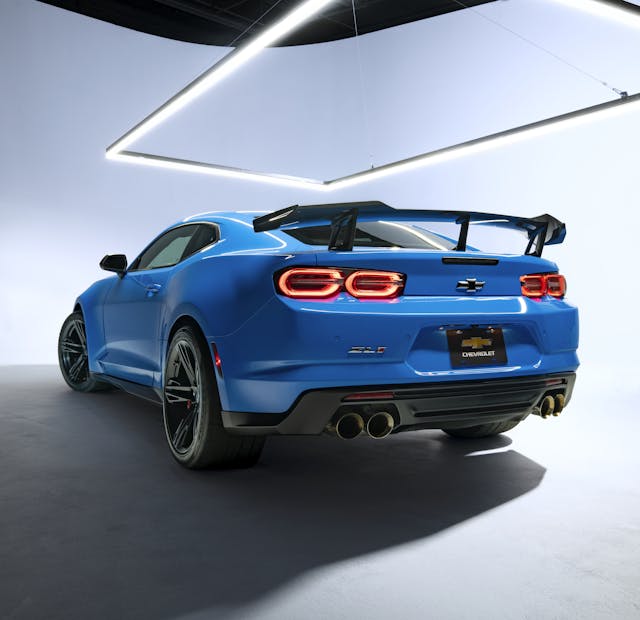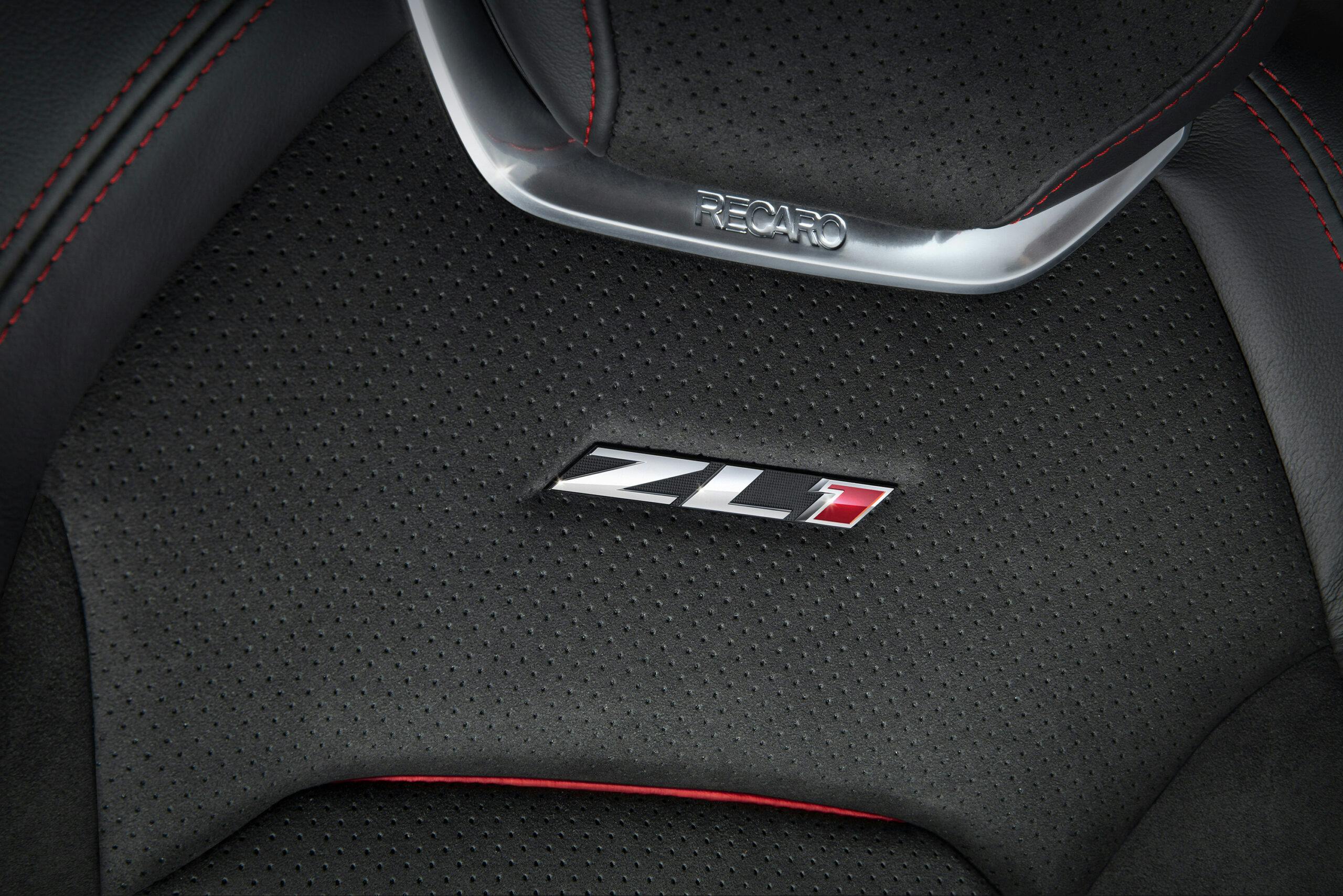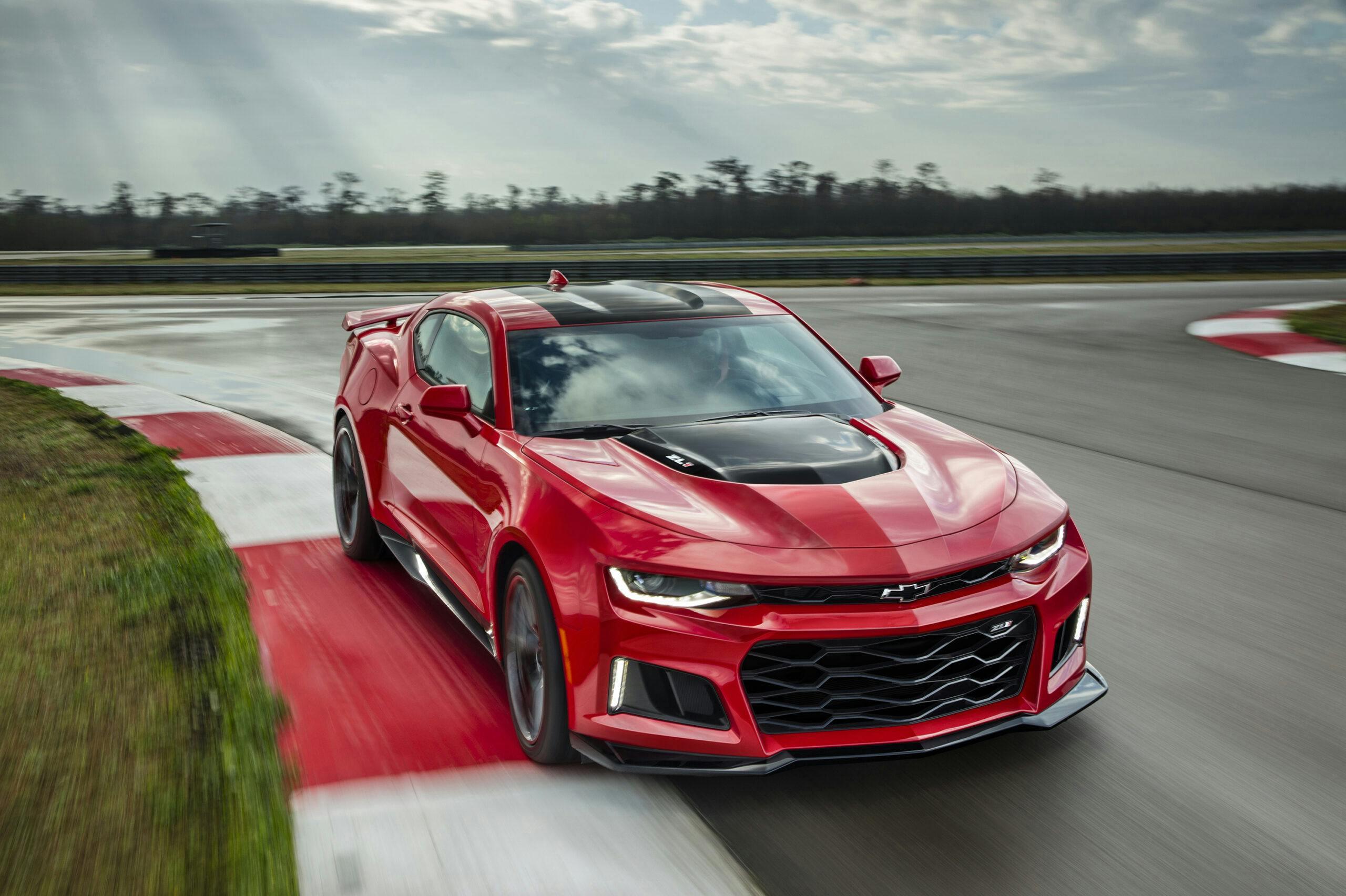Sixth-Gen Camaro (2016–24): The one that nailed it
With the Camaro nameplate retiring soon, we’re honoring the beloved two-door with a series of love letters, fun lists, and memories that you can follow here. Many performance cars, especially nowadays, aim for an anodyne version of perfection that only a few can afford. The Camaro is for the rest of us—and it’s always ready to party. Still, we can’t pretend the car we’re about to celebrate over the next week or so is perfect. That in mind, let down your hair and come with us for a deep dive into what, exactly, makes the sixth-gen Camaro so bitchin’.
If designers ruled the roost for the fifth-generation car, the engineers made their presence known for the sixth gen. “We literally designed the sixth-generation Camaro while we were reading about the faults of the fifth generation in the enthusiast media,” remembered Al Oppenheiser.
The biggest complaint was weight. The Zeta platform on which the fifth gen rode started life serving full-size Holden sedans, which made for a porky two-door. There was some movement within GM to continue the sixth gen on the same architecture, to the point of creating full-size design models on it. But around the time work on the car began, another option presented itself. “Before I left, the ATS platform was being designed, and I was pushing it in a way that would make it viable for the Camaro,” remembered John Heinricy, who retired in 2008 as an executive in GM’s performance division.
The resulting Alpha platform, which was engineered for the Cadillac ATS and CTS, ultimately wound up serving the Camaro as well, and it was key to making the car finally drive as good as it looked. “With Alpha, we were able to expand gen six’s performance capability because of its lower mass and structural differences.” Oppenheiser summed up the two generations this way: “With the fifth gen, the driver learns how to drive the car, while with the sixth gen, the car responds to the driver’s input. It was a completely different philosophy.”
The philosophy did not change quite as much from a design standpoint—the car clearly continued to hark back to 1969. “We wanted to move beyond gen five’s design, but the question was, ‘How far can we push it?’” said Peters. The basic shape, it was decided, would be sacrosanct. “I like to say that the form is in the brand, so when you look at it, you say, ‘Yeah, it’s a Camaro.’ It can’t be mistaken with anything else. You don’t need the badge.”
Familiar as it looked, there were important surface changes. “We learned a lot, not only from Camaro racing, but Corvette racing, too, and we applied that knowledge to the new design,” continued Peters. “We knew there would be more powerful engines, and so it had to breathe like crazy. We had to open up that front end. We spent a lot of time in the wind tunnel, and that led us to develop some forms that we might not have sketched before. When I first started, the designers’ relationship with the aerodynamic group was almost adversarial. Later, I realized that you have to collaborate. Out of conflict came a new and better way of designing.”
The sixth-gen Camaro debuted in 2015 as a 2016 model, simultaneously available as a coupe and as a convertible. The 3.6-liter V-6 made 335 horsepower, while the SS had a 6.2-liter V-8 good for 455 ponies. Most notably, the Camaro offered a four-cylinder as the base engine for the first time since 1986, now as a turbocharged 2.0-liter making 275 horsepower. All engines could be matched with either a six-speed manual or an eight-speed automatic. In 2017, GM offered a ZL1 option; this time, the supercharged 6.2-liter V-8 made 650 horsepower with either a six-speed manual or a 10-speed automatic.
A conversation about the fifth- and sixth-gen Camaros wouldn’t be complete without mentioning visibility—or, rather, the lack of it. Peters is aware of the criticism but stands by the design. “These cars were driven by style, and I wanted to keep the proportions as dramatic as possible,” he explained. “In my mind, there are cars like the Countach and yeah, they’re not sedans. But that’s our mission. The gen six is definitely more dramatic than gen five. We went around and around about that. We also know we were incorporating some awesome technology—not just rear-avoidance sensors, but the new rearview mirror we were going to have where basically you look in the mirror and the whole upper goes away. I knew it was onboard and that was a powerful tool. From a visibility perspective, it turns your car into a convertible.” Peters concluded by saying, “I never had as much freedom to get where I was 100 percent satisfied on exterior design as I was on the sixth-generation Camaro.”
The one that comes next …
So, what about a seventh-generation Camaro? GM has been careful to clarify that the end of the sixth generation’s production is “not the end of the Camaro’s story.” It has also been careful not to give much detail on what the next chapter may entail, but the tea leaves read that it’ll be an electric vehicle, likely with four doors.
If that sounds depressing, allow Al Oppenheiser, who moved from Camaro engineering to the Hummer EV, to try to cheer us up. “If we get the opportunity to do another Camaro, I would say we would be able to be successful if we remembered that DNA. It’s a soul. It’s part of you and it’s an expression of you. If we could do that, then you could make it out of any propulsion system,” he said, adding, “It’s no coincidence that [with the Hummer EV] we took 1000 horsepower and went 0–60 in 3 seconds.”
***
Check out the Hagerty Media homepage so you don’t miss a single story, or better yet, bookmark it. To get our best stories delivered right to your inbox, subscribe to our newsletters.






This was what may have been the Best Camaro ever made mechanically.
I think because they stuck to the Retro look so much many people never understood or realized how good this car was.
I wish they had done this car with its own look to set it apart. It really was a world class GT but was still seen as just a Camaro due to too much retro.
There’s nothing retro-looking about either the 5th or the 6th generation, and most people would never be able to tell the two apart. Everyone tries to claim that they looked like a ’69, but that’s ridiculous. You would really have to squint and use your imagination to see any similarities. And frankly, that was a big mistake. If you want to know how to do it, all they had to do is look at the way Ford and Dodge did it with their pony cars. They both hit it out of the park, although Ford dropped the ball after a few years of the retro Mustang.
As far as design and interior packaging, this generation was the worst. If two people were in the front there was man contact. The vents angled like the display, downwards, visibility was awkward like driving a post office box and the external styling had so many creases, undulations, jabs and silly spoilers it reminded one of what a 5th Gen would look if it crashed a J. C. Whitney catalog store.
Sure it was smaller and more chuckable but at great expense to looks and liveability.
The production numbers tell the tale. It never came close to the 5th Generation Camaro production and most folks thought it was long out of build cause there was no inventory seen on roads or dealers.
It is a shame this is the last Camaro. Not the best by far.
I was / am the target buyer for these. I always rent a pony car when on a business trip and I preferred the Camaro to the Mustang and Charger by a large margin. The way it drives is head and shoulders above the other two. If you ever get a chance to ride in a well set up SS 1LE at an autocross it will blow your mind: it handles like a Miata, puts the power down like a Porsche, launches like a Tesla and has more grip than you will believe.
Having said all that, I never bought one, even though I wanted it. I could never come to terms with the visibility. I am an “aggressive driver” meaning I change lanes quickly and I was terrified I’d side swipe someone I never saw in a too-fast lane change. Plus, having no idea if/where the police are is also a concern. The designer’s claim in the article that the rear-view camera makes the poor visibility moot is a cop-out. I have one of those camera mirrors in my Blackwing – it’s 18″ from my eyes. It might work for someone in their 20s (but not many 20 year olds are buying these new). In my 40s, I can still just barely focus at 18″ to use it, but it takes a couple of seconds for my eyes to accommodate. With an actual mirror this is not an issue as your focus stays at infinity.
When the Blackwing came out I bought one instead of the Camaro, but I’d much rather have a 2 door – ie ZL1 Camaro was what I always wanted, but could never bring myself to buy due to the poor visibility. I kept hoping the next gen Camaro would keep the driving dynamics but fix the poor visibility. If you can live with 4 doors, the Blackwings did solve the visibility issues and keep the alpha platform driving dynamics – although at a MUCH higher purchase price.
An electric Camaro with 4 doors.
Why do automakers keep doing this? If you’re going to make a 4 door EV call it an Impala. That at least has a history as a performance sedan.
Absolutely! A Camaro has 2 DOORS!!! NOT 4. Just like the “Mustang” electric…I think they are abominations of the original designers mission. Small car, big engine; eat Mustangs. 😋 Ford smartly offers the 2024 Mustang as either Electric or V8. Lastly, I think the Corvette E-Ray has the right idea. AWD. 160 hp electric up front and
Having read in the early part of this article, that this was built on a Cadillac platform, now I understand why it looks so wrong. No Camaro in this at all, just Cadillac. I think this should’ve been called the new Allante!
My first introduction to the Camaro was as a kid via a family friend’s 1968 SS. Black with white stripes, the 350 and a glorious sound. It was by that car that I measured all future Camaros. Sadly, future Camaros didn’t live up. They got progressively worse through Gen4. Gen5 fixed a lot of issues, but the weight mentioned here as well as other issues still kept it from being great. Gen6 is the next-best thing to that ’68. I get that there are some issues with it–what car is perfect? But maybe I’m more forgiving now that I’ve had seriously great cars that have had to compromise some things in order to achieve that. Camaro haters, call me when your non-convertible has only 3.5 cubic feet of trunk space. Or when you absolutely *must* use a video rearview mirror because *nothing* can be seen without it. Had my car been made in the ’70s, I’d probably have to open the door and look outside the car to backup just like Countach drivers had to do. But those are minor prices to pay for an outstanding driving experience. Can’t minor issues with the Camaro be forgiven?
I remember first seeing the 6th gen in the lobby of the Cadillac building. I was a Corvette guy, so I never considered buying a Camaro. But I just stood and stared at that car, it was stunning. I was hooked. Took me till 2022 to buy one, had to get one of the final manual transmission cars available from GM. I enjoy my 6th gen Camaro as much as my 6th gen Corvette, and I have no issues with the visibility in my 1SS without the fancy camera mirror.
It nailed everything except the interior. It doubled down on the bunker interior. materials got slightly better but not much. Mustang had a more livable interior.
Houses (like the Mustang) also have a more livable interior than the G6 Camaro, but that doesn’t mean I want to drive one. I’ll take my SS 1LE any day, on the road…… and to the track!
Just let it die a dignified death. Don’t bring it back to be a 4 door rolling appliance.